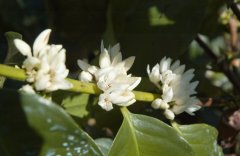Indian Plantation A Coffee, known as "very natural nuggets".
India is the first country in Asia to grow coffee, and India's A-grade coffee beans have always been a kind of coffee strongly concerned by coffee lovers all over the world. Its flavor and taste features: uniform particles, rich taste, slippery and delicious. The cultivation of Indian coffee originated from their colonists, the British. As early as the 17th and early 18th centuries, the English were not as addicted to tea as they are now, they liked coffee. It is naturally the best choice to grow the coffee they need in colonies where soil, water and climate are quite suitable. The coffee growing industry in India has grown rapidly under the demand and promotion of the British. India's high-quality A coffee comes from the southern state of Karataka represented by Mysore and Tamil Nadu represented by Madras. Since 1992, the Indian government has labeled grade A coffee beans of high-quality arable land as "very natural gold nuggets" and began to implement a certification system for high-quality coffee beans to encourage the development of high-quality plantations.

People who taste Indian coffee for the first time will feel a strong "ocean flavor" because Indian coffee beans are dried by the salty sea breeze.
Grade A coffee beans in India have always been a kind of coffee strongly concerned by coffee lovers all over the world because of their unique processing methods. From May to June every year, it is the monsoon period in India, and the rainy and dry seasons occur repeatedly. During this period, the coffee should be piled to a height of 12cm to 20cm, spread on one side of the tall building and stacked for about five or six days. Pick the coffee beans with a rake from time to time so that the sun shines evenly on the coffee beans. This process has to be repeated several times. Then put the coffee beans loosely into the bag and let them enjoy the breeze. For 7 weeks, keep taking the coffee beans out of the bag and putting them back. Finally, the workers hand-select the coffee beans and pack them for export. The coffee in India is mainly Arabica coffee, while Robbist coffee was introduced at the end of the 19th century and accounted for a certain proportion. Indian Grade A coffee beans are baptized by the monsoon and are rich, smooth and delicious, but have a peculiar spicy taste. Coffee connoisseurs have commented that grade A coffee has a similar taste to Indonesian aged beans, which may be the same as the principle of their treatment.
Important Notice :
前街咖啡 FrontStreet Coffee has moved to new addredd:
FrontStreet Coffee Address: 315,Donghua East Road,GuangZhou
Tel:020 38364473
- Prev

Coffee common sense personal office coffee pot first choice Swiss gold
There are several preferred types of personal office coffee pots: French presser, hario cfo or tiamo single filter cup coffee maker, Swiss gold swissgold kf-300 drip filter coffee maker and so on. In a careful and comprehensive comparison, the personal office coffee maker is preferred to the Swiss gold swissgold kf-300 drip filter coffee maker, because it is clearer than the coffee filtered by the French press and is more clear than hario cfo or tiamo alone.
- Next

General knowledge of fine coffee where does the real aroma of coffee come from
In a coffee obsession like mine, there is no smell comparable to the smell in the coffee field during the flowering period. The first flowering period of the coffee tree is about three years. The white flowers are five-petal tube-shaped flowers, with a faint fragrance of jasmine, and the inflorescences are arranged in dense clusters. It will wither after two or three days of flowering and begin to bear fruit after a few months. In Yunnan, this is the right time.
Related
- Beginners will see the "Coffee pull flower" guide!
- What is the difference between ice blog purified milk and ordinary milk coffee?
- Why is the Philippines the largest producer of crops in Liberia?
- For coffee extraction, should the fine powder be retained?
- How does extracted espresso fill pressed powder? How much strength does it take to press the powder?
- How to make jasmine cold extract coffee? Is the jasmine + latte good?
- Will this little toy really make the coffee taste better? How does Lily Drip affect coffee extraction?
- Will the action of slapping the filter cup also affect coffee extraction?
- What's the difference between powder-to-water ratio and powder-to-liquid ratio?
- What is the Ethiopian local species? What does it have to do with Heirloom native species?

